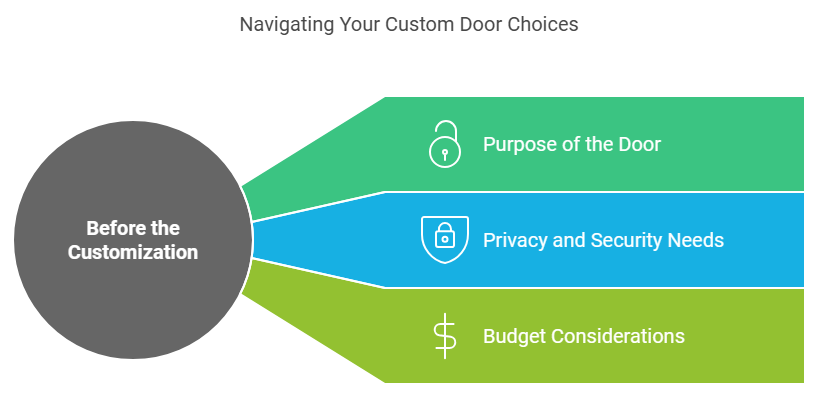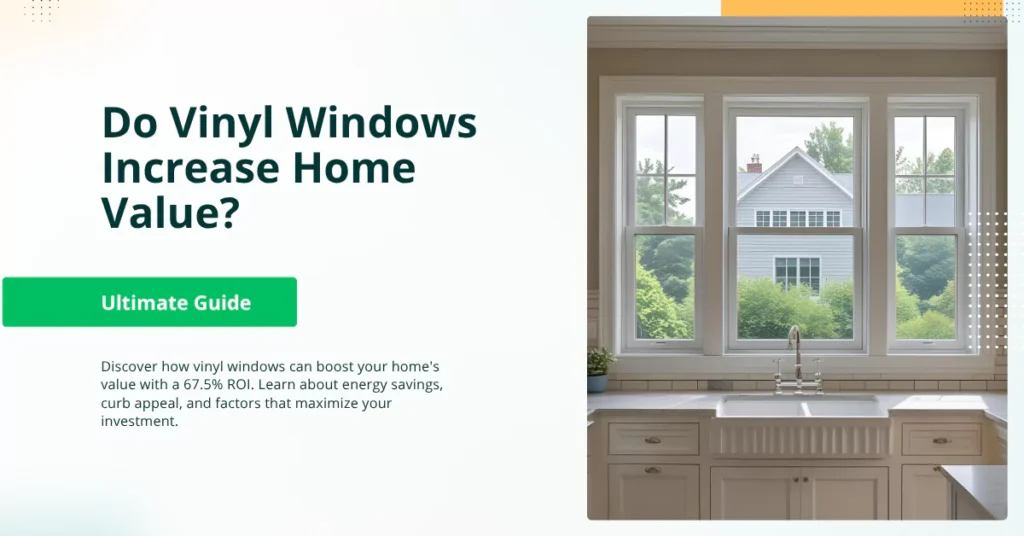Choosing the right custom door for your home is a significant decision that impacts both the aesthetic appeal and functionality of your space. Whether you’re selecting an entry door to make a bold first impression or an interior door to blend seamlessly with your décor, there are several factors to consider.
This guide will take you through a step-by-step process to help you make an informed decision.
Step 1: Assess Your Needs
Before diving into styles, materials, and designs, it’s essential to understand the specific needs of your home. Ask yourself the following questions:
- What is the purpose of the door? Is it for the front entrance, an interior room, or perhaps a patio?
- What level of privacy and security do you need? For example, a front door requires more security features than a bedroom door.
- What is your budget? Custom doors can vary greatly in price depending on materials, design complexity, and additional features.

By answering these questions, you’ll have a clearer idea of what type of door will best suit your needs.
Step 2: Choose the Right Material
The material of your door plays a crucial role in its durability, appearance, and maintenance requirements. Below are some common materials used for custom doors:
| Material | Pros | Cons |
|---|---|---|
| Wood | Classic look, customizable, great insulation | Requires regular maintenance (e.g., sealing), can warp or crack |
| Steel | Strong and secure, energy-efficient | Prone to rust if not properly maintained |
| Fiberglass Composite | Durable, low maintenance, mimics wood appearance | Can be expensive |
| Glass (with frame) | Allows natural light, modern aesthetic | Less privacy unless frosted or tinted |
| Wrought Iron | Highly durable, ornate designs available | Heavy and expensive |
Each material has its advantages depending on where the door will be installed. For example:
- Front doors often benefit from materials like wood or steel for durability and security.
- Interior doors can use lighter materials like wood or fiberglass.
- Patio doors may incorporate glass to allow more natural light into the home.
Step 3: Consider Door Styles
The style of your door should complement your home’s architectural design. Here are some popular styles:
1. Panel Doors
Panel doors are versatile and come in various configurations:
- Three-panel doors: A classic choice with three vertical panels.
- Six-panel doors: The most common type for traditional homes.
2. French Doors
French doors are typically used for patios or as room dividers. They consist of multiple small panes of glass that allow light to pass through while maintaining some privacy.
3. Bifold Doors
Bifold doors fold in sections and are often used for closets or wide openings where space-saving is crucial.
4. Modern Doors
For contemporary homes, sleek metal or glass doors with minimalistic designs are popular.
5. Custom Carved Wood Doors
These feature intricate patterns carved into wood, adding elegance and sophistication to any entryway.
Step 4: Measure Accurately
Accurate measurements are critical when ordering custom doors. Follow these guidelines:
- Measure the width: Measure at three points top, middle, and bottom, and use the smallest measurement.
- Measure the height: Measure from the threshold to the top of the frame on both sides and use the smaller number.
- Measure the thickness: Most doors are around 1¾ inches thick but always measure to ensure proper fit].
- Jamb width: This is particularly important if you’re replacing an existing door frame.
For more detailed instructions on how to measure different types of doors (e.g., side or storm doors), refer to specific guides tailored to those needs.
Step 5: Decide on Door Swing Direction
The direction in which your door swings can affect traffic flow in your home:
- Inward swing: Most interior doors swing inward into rooms for safety reasons (e.g., bathrooms).
- Outward swing: In small spaces like pantries or closets, outward-swinging doors may be more practical.
When deciding on swing direction:
- Stand in front of the door as if opening it.
- Determine whether hinges should be on the left or right side based on room layout and space constraints.
Step 6: Select Additional Features
Custom doors offer endless possibilities when it comes to additional features that enhance both form and function:
1. Glass Panels
Glass panels can add elegance while allowing natural light into your home:
- Clear glass maximizes light but reduces privacy.
- Frosted or stained glass provides privacy while still allowing light.
2. Decorative Hardware
From handles to hinges, decorative hardware can add a personal touch:
- Choose between modern stainless steel finishes or vintage brass options depending on your home’s style.
3. Insulation
For exterior doors in colder climates, consider adding insulation features such as weatherstripping or insulated cores to reduce energy costs.
Step 7: Consider Security Features
Security is paramount when choosing a front door:
- Look for reinforced frames and multi-point locking systems.
- Steel and wrought iron are excellent choices for security-conscious homeowners.
Additionally, smart locks can be integrated into custom designs for added convenience.
Step 8: Match Your Home’s Aesthetic
Your custom door should harmonize with your home’s overall design theme:
- For a rustic look, consider solid wood with distressed finishes.
- For modern homes, opt for sleek metal or glass designs.
- If your home has a traditional style (e.g., Victorian), choose ornate designs like carved wood or stained glass inserts.
The color of your door also plays a significant role:
- Neutral tones like black or brown offer timeless appeal.
- Bold colors like red or navy blue can make a statement while still blending with various styles.
Step 9: Budgeting
Custom doors vary widely in price based on materials, size, and design complexity:
| Door Type | Estimated Cost Range |
|---|---|
| Basic Wood Panel Door | $200 – $500 |
| Custom Carved Wood Door | $1,000 – $5,000+ |
| Steel Security Door | $300 – $700 |
| Fiberglass Composite Door | $300 – $1,500 |
| Glass French Door | $600 – $2,000 |
While it’s tempting to go for cheaper options upfront, remember that higher-quality materials often last longer and require less maintenance over time. Investing in durable materials can save you money in repairs or replacements down the line.
Conclusion
Choosing the right custom door for your home is about balancing aesthetics with function. By following these steps—assessing your needs, selecting appropriate materials and styles, measuring accurately, considering security features, and budgeting—you’ll be well-equipped to make an informed decision.
Remember that this is an investment that not only enhances your home’s curb appeal but also improves its functionality and value over time.










